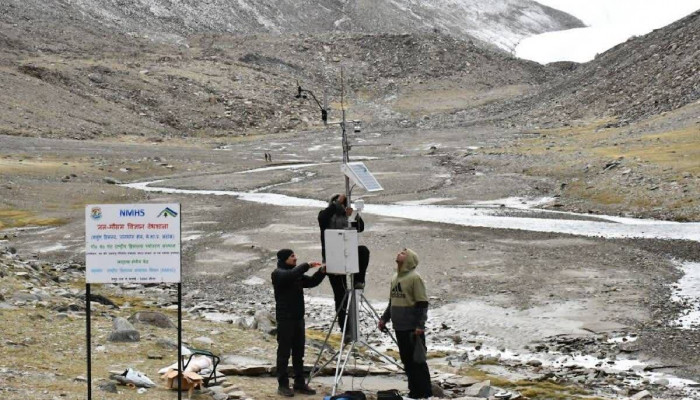New Hydro-Meteorological Observatory established on Rulung Glacier in Ladakh
- In Reports
- 04:52 PM, Aug 08, 2024
- Myind Staff
The GB Pant National Institute of Himalayan Environment (NIHE) has set up a new Hydro-Meteorological Observatory on the Rulung Glacier in Ladakh. This project, under the National Mission on Himalayan Studies (NMHS) by the Ministry of Environment, Forest and Climate Change (MoEF&CC), aims to provide essential data on glacier dynamics and their impact on regional water systems.
Dr. Purushottam Kumar Garg, Scientist (R&D) at NIHE’s Ladakh Regional Centre, explained to ETV Bharat, “The Himalaya-Karakoram region holds the largest glacier cover outside the polar regions, crucial for regulating major river systems like the Indus, Ganges, and Brahmaputra. Around one billion people depend on the water from these glaciers.”
The project, titled “Assessment of Glacier-Climate Functional Relationships Across the Indian Himalayan Region Through Long-Term Network Observations,” will study glacial dynamics, morphometry, hydrodynamics, melt-water chemistry, and mass balance in the Indus, Ganges, and Brahmaputra basins.
The Rulung Glacier in Ladakh was selected for its long-term monitoring potential. Dr. Garg noted, “Ladakh is crucial for glacier research but remains under-studied. Our goal is to close this research gap with long-term observations.”
The project started with an expedition to the Rulung Glacier in October 2023, where initial measurements and equipment sites were set. The second expedition, from late July to early August 2024, installed an Automatic Weather Station (AWS) at about 5600 meters above sea level. The AWS, with sensors for wind speed, snow depth, radiation, albedo, air temperature, and humidity, will provide real-time data. A discharge measurement site with an Automatic Water Level Recorder (AWLR) was also set up to track meltwater discharge.
Dr. Garg summarised, “The main goal is to gather reliable data on glacier changes and local weather to improve water resource management in the region.” Despite challenges in high-altitude areas, he praised the support from local communities and his team.
This observatory represents a significant advance in high-altitude monitoring, supporting the long-term preservation of crucial glacier resources.
Image source: ETV Bharat







Comments